Twelve places of worship have been designated to Fresno's
Local Register of Historic Resources, one of which is also in the National
Register of Historic Resources. They are described here in the order they were
constructed.
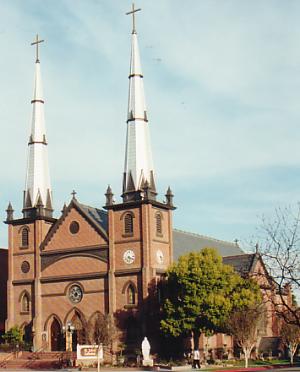
St. John's Cathedral (1902)
2814 Mariposa Street
Thomas Bermingham,
Architect
Gothic Romanesque
St. John's is the mother church of the Fresno Roman
Catholic diocese, and is the oldest existing Catholic Church in Fresno. Though
today located near the heart of downtown Fresno, it was considered to be
outside of the city when it was first constructed.

First Congregational Church (1911)
11 N. San Pablo Avenue
Henry F. Starbuck, Architect
Craftsman
With its "witch's hat" spire, this building is a very
individualistic expression of church design. It has suffered some unfortunate
modifications, particularly the infill of the flat arched arcades and
ground-level windows. After the First Congregational Church moved to its "big
red church" near Fresno High School, this building was for a time the King
Solomon Lodge. More recently it has become a church building once again,
serving as the home of The Revival Fellowship.
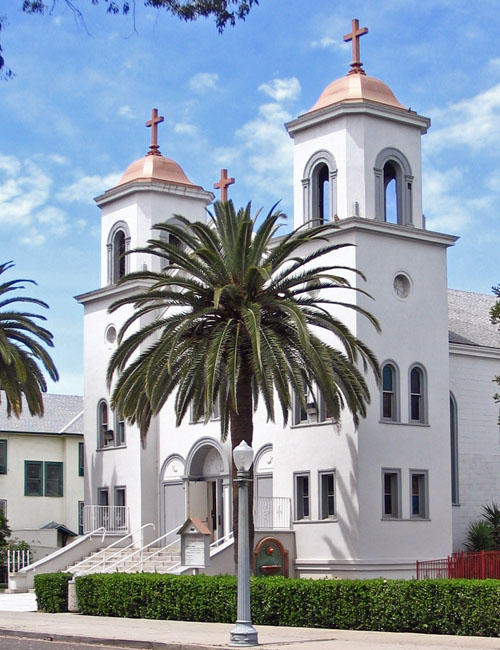
St. Alphonsus Catholic Church (1913)
307 E. Kearney Boulevard
Albert C. Martin, Architect
Period
Revival
The St. Alphonsus Church, located prominently on Kearney
Boulevard, is one of the architectural showpieces of West Fresno. It is the
only known project in Fresno by Los Angeles architect Albert C. Martin.
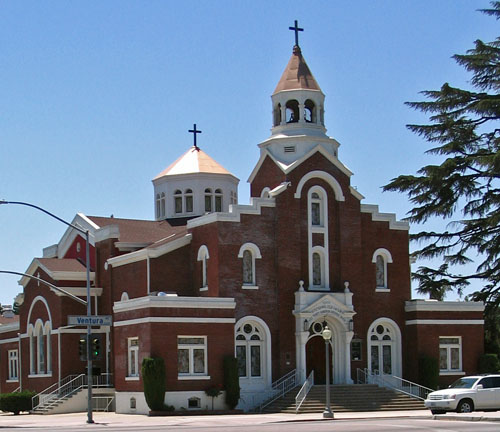
Holy Trinity Armenian Apostolic Church (1914)
2226 Ventura Street
L.
K. Cone, Architect
Period Revival, Armenian influence
Holy Trinity Armenian Apostolic Church was the first church built in the tradition of Armenian church architecture in the United States. It additionally is the first designed by an Armenian architect, Lawrence Karekin Cone (Condrajian). Cone was Fresno's first Armenian architect. Although there are older churches in the United States used for Armenian services, these facilities either were existing church structures not built for Armenians, or built by Armenians with no reference to Armenian church architecture.
In designing this church, Cone followed very closely the style of old Armenian churches in Armenia and Turkey from the fourth to seventeenth centuries. Armenian church architecture has long been recognized as the first church architecture to reflect a unique style, which was perfected in its various forms after the seventh century A.D. It is believed that this style and the method of construction influenced the later European Romanesque and Gothic architecture. The church's unique dome characterizes this building as Armenian more than any other single design feature.
The Holy Trinity Church is also in the National Register of Historic Places.
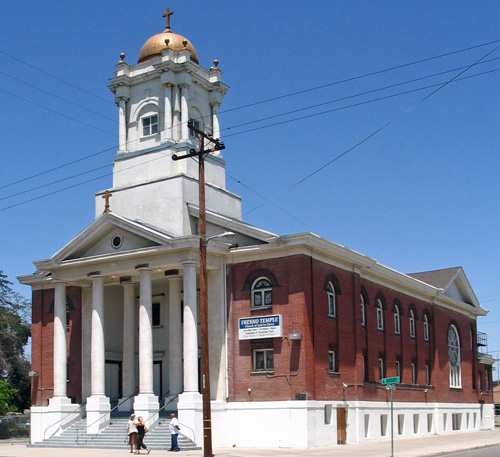 Free Evangelical Lutheran Cross Church (1914)
Free Evangelical Lutheran Cross Church (1914)
208 E Street
Henry
F. Starbuck, Architect
Period Revival, Neoclassical
influence
The "Cross Church" was constructed by members of Fresno's
Volga German community, and was originally located at F and San Diego Streets.
The building was relocated two blocks to E and Los Angeles Streets in order to
make room for the Highway 99 project in 1947. Today the building is owned by
the Fresno Temple Church of God, an African-American
congregation.
ÿ
 First Church of Christ Scientist (1916)
First Church of Christ Scientist (1916)
1615 N Street
Robert
Hotchkin, Architect
Neoclassical
This massive Neoclassical structure remains in much the
same condition as when it was originally built. It is a reminder of an era
during which the Church of Christ Scientist was a much more prominent part of
the local religious community. Today it is used by the Power House
Institutional Church of God in Christ.
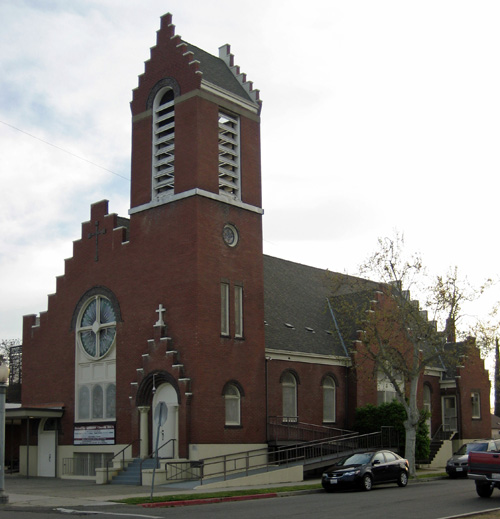 Bethel Danish Lutheran Church
(1917)
Bethel Danish Lutheran Church
(1917)
183 N. Broadway
Henry F. Starbuck, Architect
A. P. Anderson,
Builder
Flemish Revival with Craftsman details
Noteworthy for its Northern European design elements (most
notably, the stepped gable parapets and its sophisticated use of brick). The
sharp angles of the stepped gables create one of the most distinctive
architectural profiles in the entire city.
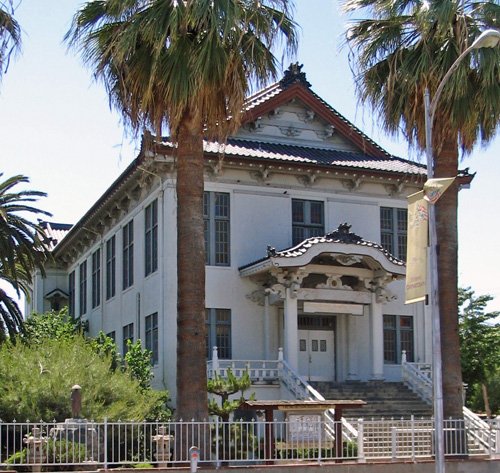 Fresno Buddhist Temple (1920)
Fresno Buddhist Temple (1920)
1340 Kern Street
Kurahashi & Hays,
Architects
Period Revival
(Craftsman and Japanesque
influence)
The temple, with its interesting blending of Japanese and
European design, was completed after an earlier Buddhist temple on the site
burned in 1919. The congregation moved to North Fresno in 2011, and the
building is for sale.
 Temple Beth
Israel (1923)
Temple Beth
Israel (1923)
2336 Calaveras Street
Robert Hotchkin, Architect
Period Revival,
Judaic ornamental influence
For many years the center of Jewish community and
religious life in Fresno. Though it functions today as a community center, the
building still maintains much of its original configuration.
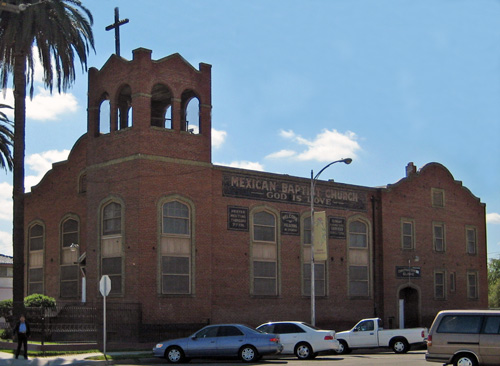 First Mexican Baptist Church (1924)
First Mexican Baptist Church (1924)
1061 E Street
Mission Revival
The Northern Baptist Convention sent a Revered Sims to
Fresno in 1920 to organize a Mexican church. Much of the building's
construction was completed by church members.
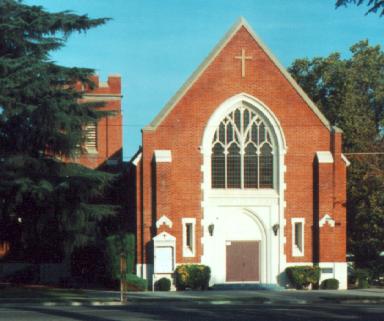 Emmanuel Lutheran Church (1929)
Emmanuel Lutheran Church (1929)
1115 U Street
Charles
E. Butner, Architect
Collegiate Gothic
This building was occupied by the Emmanuel Lutheran Church
from 1929 until the mid-1960s. In 1968 it was purchased by the Carter Memorial
African Methodist Episcopal Church, and today is occupied by the Living Faith
Evangelical Church. The building represents an outstanding example of the
Collegiate Gothic style.
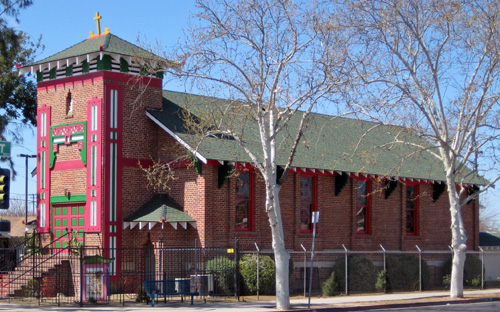 St. Genevieve's Catholic Church (1938)
St. Genevieve's Catholic Church (1938)
1127 Tulare Street
Period Revival, Chinese
influence
St. Genevieve's was established as a place of worship for Chinese laborers in Fresno. The building features many Chinese design elements. St. Genevieve's parish, consisting of one square block, is purported to be the smallest parish church in the world.